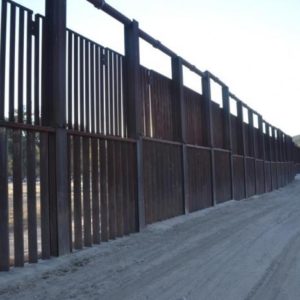On his first day in office, President Joe Biden issued a presidential action putting an end to former President Donald Trump’s declared national emergency along the U.S.-Mexico border. In addition to calling for a reassessment of the region’s security, Biden halted the construction of Trump’s beloved border wall. It marks the end of one of the more cartoonish and devastating hallmarks of the Trump era.
This is a victory for so many who opposed the fortification, from Native American tribes to environmental activists to city governments. But there remains a lingering worry that it will be years before the damage of wall construction finally subsides in the borderlands.
That’s especially true of the private landowners who were unlucky enough to have property along the projected path of the barrier. As it turns out, Trump’s construction efforts were never going to be as clean-cut as he claimed––between private property comprising two-thirds of the southern border and a split opinion of the project among borderlands residents, roadblocks seemed inevitable. Luckily for Trump, and unluckily for anyone who cares about property rights, eminent domain helped get the ball rolling.
Eminent domain refers to the federal government’s power to seize private property for public use. In theory, the Fifth Amendment acts as a safeguard against abuse, requiring “just compensation” in exchange for land. In practice, though, the appraisals and compensation are easily manipulated. The federal government lowballs land values and bullies owners into accepting its offer, lest their land simply be condemned and seized without any money to soften the blow.
In the time between the initiation of border fortification and Biden’s cancellation of those efforts, Trump and his administration filed eminent domain lawsuits at a frenetic pace. Between January 2017 and August 2020, the Department of Justice had initiated 109 lawsuits against borderlands residents, had secured 135 tracts of land as of November 2020 and had plans to seize 5,275 acres in total. The Department of Homeland Security frequently offered low bids to landowners––bids that wealthy folks could negotiate up with the help of lawyers and that poorer folks simply had to accept. And even if the government offered “fair market value” bids (it didn’t), this approach failed to account for sentimental value.
The constitutional dubiousness of Trump’s wall obsession ran in tandem with a complete disregard for the lives and preferences of the people he claimed to be protecting. As Rio Grande City Mayor Joel Villarreal put it, “For many, the land has been in their families for generations….They speak of it as something to be cherished, the idea of having land.” Ociel Mendoza, a Texan ranch owner whose land was partially awarded to the federal government despite his objections, said the same of his property: “It represents a dream to me. The American dream.”
Unfortunately, already-seized land might never return to its rightful owner even if construction efforts fall through. The highest-profile eminent domain case, Kelo v. City of New London, indicates as much. Susette Kelo’s little pink house fell victim to New London, Connecticut’s private development plans, with Kelo losing her property despite bringing her case all the way to the Supreme Court. But development plans crumbled in 2009, and now, the land at 8 East Street is nothing more than a barren lot.
Could borderlands residents face the same fate as Susette Kelo? It remains to be seen. Biden previously vowed to end land seizure and lawsuits against landowners in the borderlands, and his administration has followed through on those promises so far. In other words, pending land grabs have stopped. But this doesn’t change the fact that many border residents lost their land through eminent domain claims––all for a scrapped project.
And the project should’ve been scrapped––halted border wall construction is a good thing, to be sure. Though it won’t come to fruition, the fortification was set to be yet another disgraceful Trump addition to our ravaged immigration system. Yet its defeat comes with scarred land and lives permanently altered. This property should’ve never been seized in the first place.
The moral of this tortured story is that land grabs ruin livelihoods and run counter to the principles of a free and open society. Don’t celebrate the wall’s demise just yet. It continues to haunt too many.

